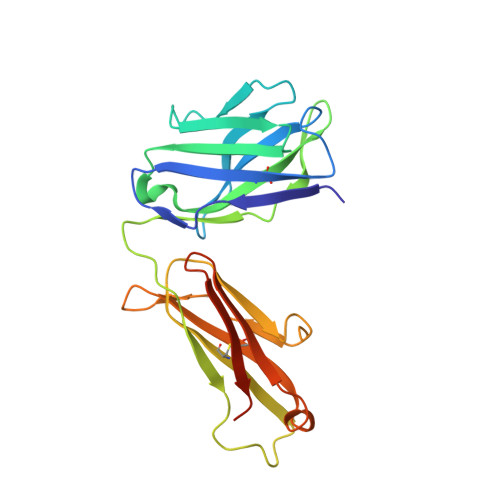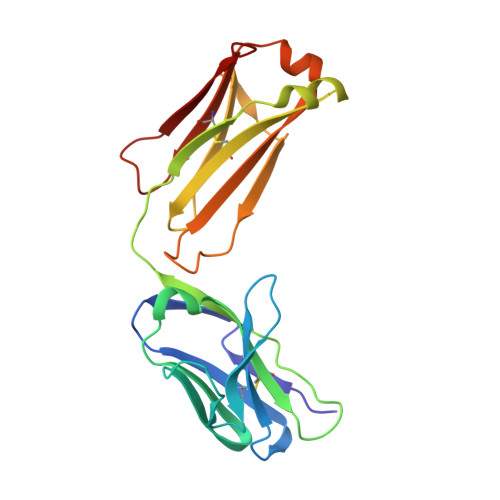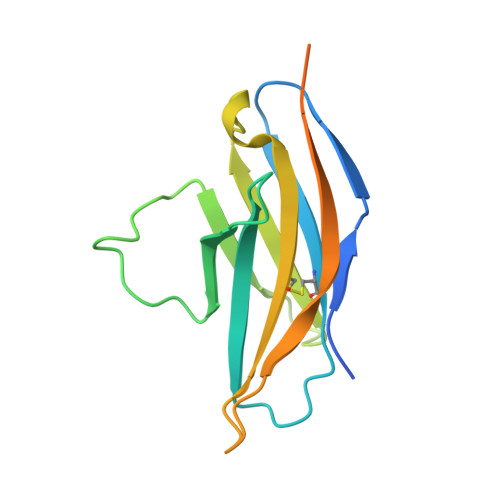Tislelizumab uniquely binds to the CC' loop of PD-1 with slow-dissociated rate and complete PD-L1 blockage.
Hong, Y., Feng, Y., Sun, H., Zhang, B., Wu, H., Zhu, Q., Li, Y., Zhang, T., Zhang, Y., Cui, X., Li, Z., Song, X., Li, K., Liu, M., Liu, Y.(2021) FEBS Open Bio 11: 782-792
- PubMed: 33527708
- DOI: https://doi.org/10.1002/2211-5463.13102
- Primary Citation of Related Structures:
7CGW - PubMed Abstract:
Programmed cell death protein 1 (PD-1), an immune checkpoint receptor expressed by activated T, B, and NK cells, is a well-known target for cancer immunotherapy. Tislelizumab (BGB-A317) is an anti-PD-1 antibody that has recently been approved for treatment of Hodgkin's lymphoma and urothelial carcinoma. Here, we show that tislelizumab displayed remarkable antitumor efficacy in a B16F10/GM-CSF mouse model. Structural biology and Surface plasmon resonance (SPR) analyses revealed unique epitopes of tislelizumab, and demonstrated that the CC' loop of PD-1, a region considered to be essential for binding to PD-1 ligand 1 (PD-L1) but not reported as targeted by other therapeutic antibodies, significantly contributes to the binding of tislelizumab. The binding surface of tislelizumab on PD-1 overlaps largely with that of the PD-L1. SPR analysis revealed the extremely slow dissociation rate of tislelizumab from PD-1. Both structural and functional analyses align with the observed ability of tislelizumab to completely block PD-1/PD-L1 interaction, broadening our understanding of the mechanism of action of anti-PD-1 antibodies.
Organizational Affiliation:
BeiGene Global Research, BeiGene (Beijing) Co., Ltd., China.

















